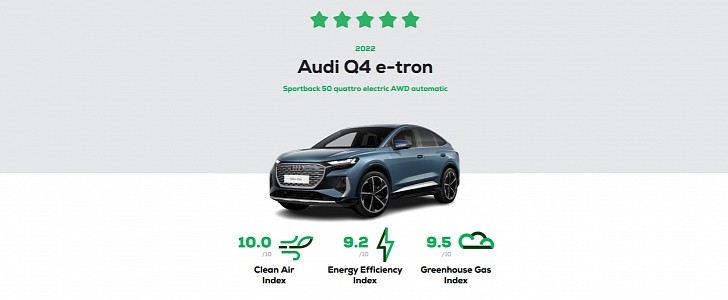Green NCAP is still perfecting its evaluation method. After granting all the electric cars it tested five starts, with ten points in energy efficiency, it started sorting out the most and the least efficient EVs, as it should. That apparently proved insufficient, and the entity will now also make a greenhouse gas assessment related to the “well” bit of its well-to-wheel test.
This new test process measures the greenhouse gas emissions that occur during the extraction, production, and distribution of energy from the source. When it relates to combustion-engined cars, it covers the process of pumping oil from the ground until it turns into gasoline or diesel. With EVs, the emissions involved with generating the electricity the cars need.
Curiously, that takes the attention from the cars and focuses it on the energy they consume. In other words, it is not intrinsic to the vehicles: all EVs will have the same emissions, as well as all diesel and gasoline cars. A more helpful measurement would have been related to the vehicle production and, in electric cars, the emissions produced with the battery packs, but Green NCAP said it does not consider that – yet.
Although the objective seems to be to incentivize people to buy vehicles that use energy involved with fewer emissions, a generic recommendation on that would probably be more effective. Each country and even each region in a given country can have a different energy matrix. Since Green NCAP’s mission is to guide individual purchase decisions, they should be all related to what each vehicle delivers.
Green NCAP also needs to explain better what it calls a two-stage test process. According to the entity, the vehicles are submitted to laboratory and road tests. If they go well in the first test stage, they can prove how robust their results are in a second set of evaluations. We have no idea if they are made in the lab, on the road, or if they are a mix of both. The same happens with the first stage: what does it involve? How many points does a car have to get to be entitled to the second stage? Green NCAP should care to explain that.
In the latest 2022 round of tests, the best vehicle was the Audi Q4 e-tron. It was the only one that fared well enough to go to this second round of evaluations. The cars that do not get there lose some points, but never in a way to get less than three stars. Considering some of the evaluated vehicles have way less than three stars, we again have no explanation for what happened.
Despite these flaws, the Green NCAP rating can offer some useful information. The Q4 e-tron has a range of 420 kilometers (261 miles) that drops to 270 km (168 mi) in cold weather and 290 km (180 mi) on the highway. It is the only vehicle to deserve five stars, but it is also the only electric car evaluated in this batch, so it is no surprise at all.
Curiously, that takes the attention from the cars and focuses it on the energy they consume. In other words, it is not intrinsic to the vehicles: all EVs will have the same emissions, as well as all diesel and gasoline cars. A more helpful measurement would have been related to the vehicle production and, in electric cars, the emissions produced with the battery packs, but Green NCAP said it does not consider that – yet.
Although the objective seems to be to incentivize people to buy vehicles that use energy involved with fewer emissions, a generic recommendation on that would probably be more effective. Each country and even each region in a given country can have a different energy matrix. Since Green NCAP’s mission is to guide individual purchase decisions, they should be all related to what each vehicle delivers.
Green NCAP also needs to explain better what it calls a two-stage test process. According to the entity, the vehicles are submitted to laboratory and road tests. If they go well in the first test stage, they can prove how robust their results are in a second set of evaluations. We have no idea if they are made in the lab, on the road, or if they are a mix of both. The same happens with the first stage: what does it involve? How many points does a car have to get to be entitled to the second stage? Green NCAP should care to explain that.
In the latest 2022 round of tests, the best vehicle was the Audi Q4 e-tron. It was the only one that fared well enough to go to this second round of evaluations. The cars that do not get there lose some points, but never in a way to get less than three stars. Considering some of the evaluated vehicles have way less than three stars, we again have no explanation for what happened.
Despite these flaws, the Green NCAP rating can offer some useful information. The Q4 e-tron has a range of 420 kilometers (261 miles) that drops to 270 km (168 mi) in cold weather and 290 km (180 mi) on the highway. It is the only vehicle to deserve five stars, but it is also the only electric car evaluated in this batch, so it is no surprise at all.







